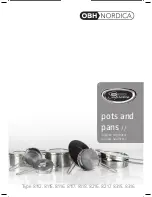
19
Cleaning
Notes for use:
* Please read the following contents before use
1. Put the fruit/vegetables into the juicer slowly, one by one. Add new fruit/vegetables only after
the previous batch has been squeezed.
2. Fruit/vegetables with large fibre content (such as celery) should be put into the juicer after
being cut into blocks of approx. 10-20cm. (Fruit/vegetables with particularly strong fibre should
be put into the juicer slowly after being cut into blocks of about 3cm).
3. For carrots which have been stored at low temperature for over one year, it is recommended
to squeeze them together with some fruit/vegetables with large water content (such as pear
or orange). The amount of juice will be greater when new batches are put into the juicer after
previous batches have been squeezed. The amount of juice will vary depending on the fruit/
vegetables water content.
4. The amount of juice will be small if fruit/vegetables are not fresh. When using dry fruit/
vegetables that have been stored in a refrigerator first immerse them in clear water for
sufficient water absorption.
5. Do not juice hard products such as kudzu, sugarcane, etc.
6. There will be certain friction noise when carrots or apples are used for squeezing. It has no
impact on the process.
7. When squeezing such products as cherry tomatoes or grapes, some juice may splash from the
feed inlet.
1. Wash the disassembled parts with running
water. If the meshes are blocked up by dreg,
use the cleaning brush for the cleaning.
Note: Do not use iron wire brushes, abradants or
any sharp tools for cleaning.
2. Do not put the main body in water for cle-
aning. Clean the main body with a wringed
soft cloth.
3. Let the parts dry after cleaning, and store
them in a clean and ventilated place.
Notes:
1. Wash the juicer in time after use, otherwise
the dreg will attach to the container, which might
affect the assembly and cleaning, or even result in
deteriorated performance.
2. The rubber pad at the bottom of the squeezing
cup is washable.











































